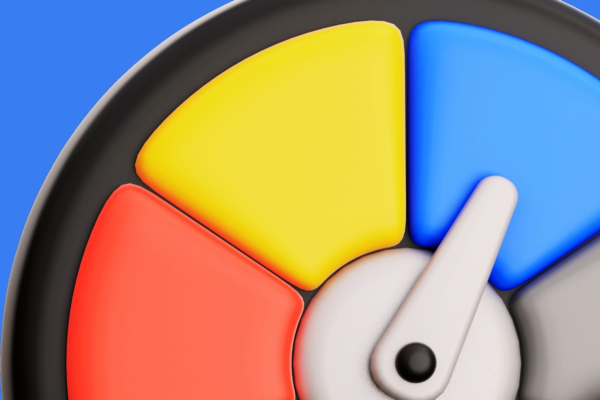
Inflation: What It Is, How It Works, and How to Navigate

Ever hear people talking about how a dollar just doesn’t go as far these days? Thanks to inflation, prices of goods and services are much more than they were decades— or even a few years— ago. The inflation rate for 2021 was 7%–the highest interest rate since 1982.
As a consumer, it’s important to understand the basics of inflation. Not only does it affect nearly all aspects of the economy, but it also affects the value of your hard-earned money. Knowing how inflation works can help you make the right decisions when it comes to saving money for the future and investing wisely.
Looking for a Financial Advisor?
Schedule an Amplify Wealth Management appointment with our colleagues at CUSO Financial Services (CFS)*.
What is inflation?
Simply put, inflation is the sustained increase in the prices of goods and services in the economy. When prices go up, the purchasing power of the dollar goes down. In other words, with inflation your money can’t buy as much as it once could. Your dollar today could probably purchase a small candy bar. In 1950, that same dollar could have gotten you 10 of those same candy bars!
Of course, prices of individual goods can also fluctuate independently of inflation because of supply and demand. For instance, a drought can make the prices of fruits and vegetables rise for one growing season. A temporary shortage of metals used to make a cell phone may cause phone prices to increase.
Inflation is measured by the average change in prices paid for a market basket of consumer goods and services— not individual items. This is known as the consumer price index or CPI. If these overall prices increase over time, it’s labeled as inflation.
How is the market basket determined?
So what’s in the market basket? According to the U.S. Bureau of Labor Statistics, the CPI market basket is developed from information provided by families and individuals of what they actually buy.
For instance, CPI data for 2021 was compiled by surveying consumers on their spending habits every quarter. Thousands of consumers are also asked to keep a journal that details everything they purchase in a two-week period.
The Bureau of Labor Statistics classifies the goods and services into eight categories: housing, food, apparel, medical care, transportation, recreation, education and communication, and other goods and services.
What causes inflation?
Inflation can be caused by a number of things— increased money supply, rising wages, and changes in policies and regulations. However, demand-pull and cost-push inflation are the two main factors. Let’s take a deeper look at these two causes.
Demand-pull Inflation
Demand-pull inflation occurs when the demand for goods and services is greater than the economy’s ability to create enough supply. This creates an upward pressure on prices, which can drive inflation.
Think about what happened at the beginning of the COVID-19 pandemic. Everyone wanted toilet paper so the demand was unusually high. Producers couldn’t keep up with the increased demand, and prices shot up. When prices increase temporarily or only for one item, this is not inflation. When prices increase on a large scale across many industries, inflation can happen.
Cost-push Inflation
Cost-push inflation occurs when the price of producing goods and services increases, pushing prices for consumers. This most often happens when labor costs or the price of raw materials increase.
Think about last year when the cost of lumber increased. It caused a domino effect. Not only was it more expensive to go buy a piece of wood, but everything made with wood— including houses— was also more expensive.
What are the types of inflation?
You may hear inflation paired with other terms that describe in price fluctuation. The following are definitions of common inflation-related terms.
Deflation: Deflation is the opposite of inflation. This is the fall in prices of goods and services. Though people like to see lower prices, periods of prolonged deflation can also be harmful to an economy.
Stagflation: Also known as recession-inflation, stagflation is an economic condition in which inflation and unemployment are high and economic demand slows.
Creeping inflation: Creeping inflation is a low rate of inflation, typically less than 3% per year.
Trotting inflation: Trotting inflation is a little higher than creeping inflation, but still no more than 10% per year.
Hyperinflation: Hyperinflation is a period of inflation that is rapid, excessive, and out-of-control. Periods of hyperinflation see rates of inflation greater than 50% month over month.
Disinflation: Disinflation describes a falling rate of inflation. Note that disinflation is not the same as deflation. Deflation marks falling prices. With disinflation, prices are still rising each month— just at a slower rate each month.
How to Navigate Inflation
So as the price of goods increases, a big concern among Americans is the effect that inflation has on savings— especially retirement savings. What will the money that you save now be worth forty years down the line? How can you ensure that you have enough money for the rising prices of the future?
The best way to combat inflation is to put your money in investments that provide a greater return than the rate of inflation. This will help you sustain the purchasing power of your money.
Consider the following scenario.
In 1982, you opened two accounts: an investment account and a savings account. The investment account averaged an 8% return per year. The savings account only earned 0.5%. You put $1,000 into each account.
Left untouched with no additional contributions, the investment account would have over $21,000 now! The savings account would only be worth $1,220.
But you still earned money on the savings account, right? Well, not quite. Because of inflation, the $1,220 is worth a lot less than it was in 1982. $1,220 in today’s dollars is equivalent to only $410 in 1982— which means less than you started with! The $1,000 may have gone a long way that year. In 2022, not so much.
Now apply that same concept to your retirement savings. What may seem like a lot of money now may not be worth more or even the same several decades from now. The bottom line is that if your savings isn’t growing at a higher rate than inflation, you’re actually losing money.
Need Help Navigating Inflation?
Navigating inflation and financially preparing for the future isn’t always easy. Luckily, there are professionals like financial advisors that can help you come up with a plan to make your money work for you. If you’re unsure whether or not you’re making the right money moves, consult an advisor for advice.
*Non-deposit investment products and services are offered through CUSO Financial Services, L.P. (“CFS”), a registered broker-dealer Member FINRA/SIPC and SEC Registered Investment Advisor. Products offered through CFS: are not NCUA/NCUSIF or otherwise federally insured, are not guarantees or obligations of the credit union, and may involve investment risk including possible loss of principal. Investment Representatives are registered through CFS. The Credit Union has contracted with CFS to make non-deposit investment products and services available to credit union members.
Prepared by Broadridge Investor Communication Solutions, Inc. Copyright 2018.
Talk to a CFS* Financial Advisor
Want to take your retirement plans to the next level? Schedule an Amplify Wealth Management appointment with our colleagues at CUSO Financial Services (CFS)*.


